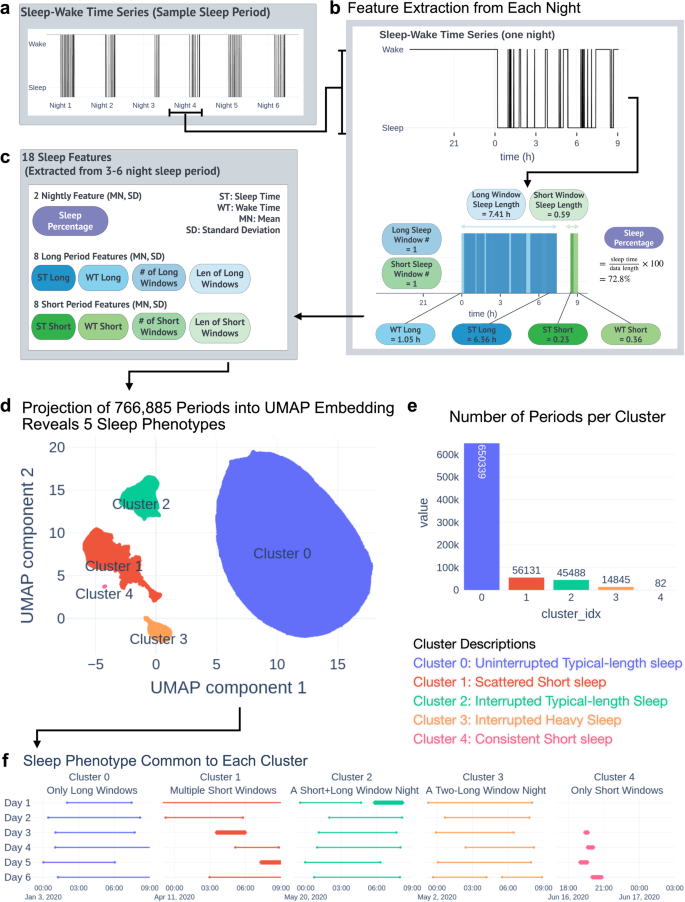2024-06-20 カリフォルニア大学サンディエゴ校(UCSD)
◆研究者らは、睡眠、皮膚温度などの情報を追跡するスマートリング「Oura Ring」から収集したデータを使用して、数か月にわたって個々の人々を観察した。 Oura Ringのデータを基に行われ、睡眠フェノタイプの変化が健康状態と密接に関連していることが明らかになりました。データの変化は、慢性疾患や感染症の早期警告として役立つ可能性があります。
<関連情報>
- https://today.ucsd.edu/story/how-your-sleep-patterns-change-can-tell-you-about-your-health
- https://www.nature.com/articles/s41746-024-01125-5
500万日の夜:ヒトの睡眠表現型における時間的ダイナミクス Five million nights: temporal dynamics in human sleep phenotypes
Varun K. Viswanath,Wendy Hartogenesis,Stephan Dilchert,Leena Pandya,Frederick M. Hecht,Ashley E. Mason,Edward J. Wang & Benjamin L. Smarr
npj Digital Medicine Published:20 June 2024
DOI:https://doi.org/10.1038/s41746-024-01125-5

Abstract
Sleep monitoring has become widespread with the rise of affordable wearable devices. However, converting sleep data into actionable change remains challenging as diverse factors can cause combinations of sleep parameters to differ both between people and within people over time. Researchers have attempted to combine sleep parameters to improve detecting similarities between nights of sleep. The cluster of similar combinations of sleep parameters from a night of sleep defines that night’s sleep phenotype. To date, quantitative models of sleep phenotype made from data collected from large populations have used cross-sectional data, which preclude longitudinal analyses that could better quantify differences within individuals over time. In analyses reported here, we used five million nights of wearable sleep data to test (a) whether an individual’s sleep phenotype changes over time and (b) whether these changes elucidate new information about acute periods of illness (e.g., flu, fever, COVID-19). We found evidence for 13 sleep phenotypes associated with sleep quality and that individuals transition between these phenotypes over time. Patterns of transitions significantly differ (i) between individuals (with vs. without a chronic health condition; chi-square test; p-value < 1e-100) and (ii) within individuals over time (before vs. during an acute condition; Chi-Square test; p-value < 1e-100). Finally, we found that the patterns of transitions carried more information about chronic and acute health conditions than did phenotype membership alone (longitudinal analyses yielded 2–10× as much information as cross-sectional analyses). These results support the use of temporal dynamics in the future development of longitudinal sleep analyses.


